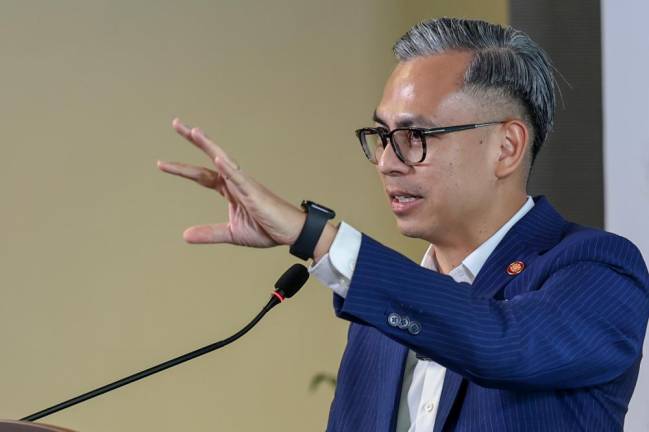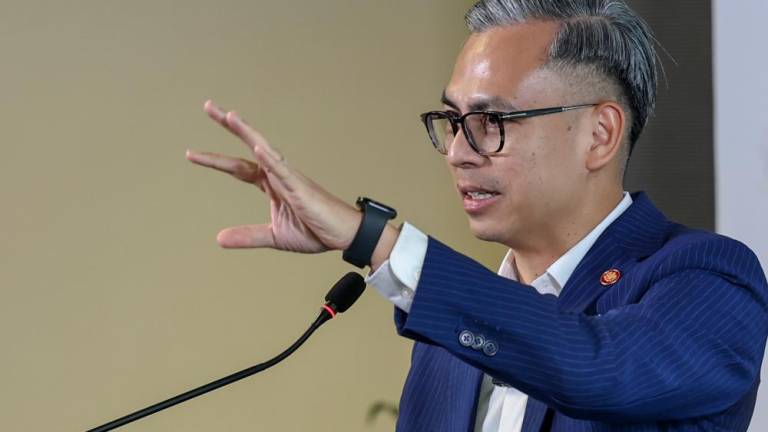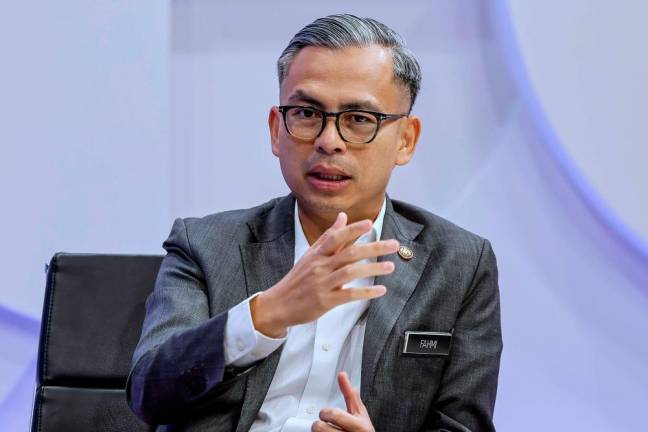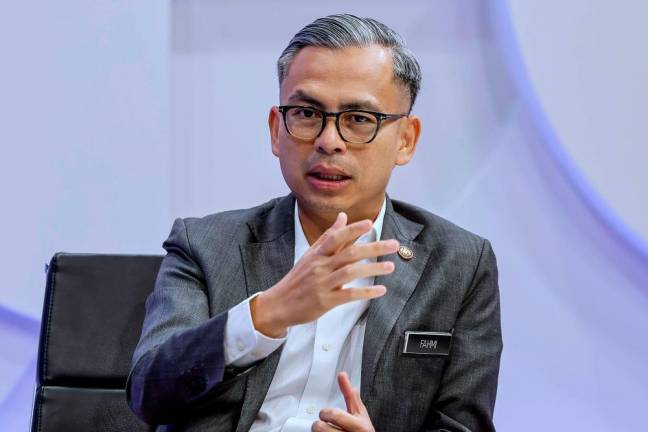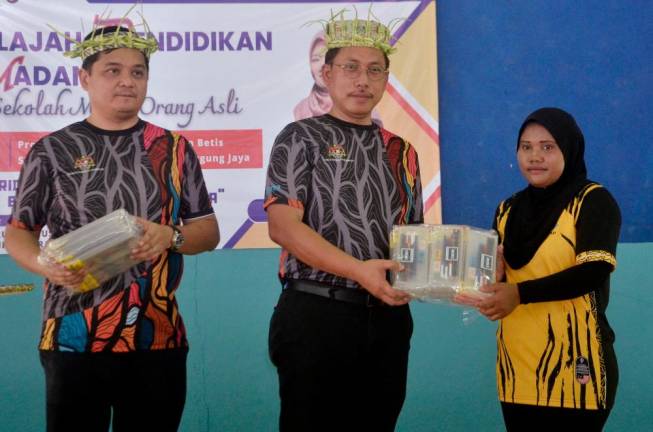IF we want to get it right and make the best use of the movement control order (MCO) we need to listen to good international experts and nations that are able to control the epidemic.
There are three key strategies in stemming this epidemic: strong and transparent leadership, physical (social) distancing and testing.
Many of us will have watched with envy the interview BBC did with South Korean Foreign Minister Kang Kyung-wha. Her strong leadership is a major reason the outbreak is controlled in South Korea. She said: “The basic principle is openness, transparency and fully keeping the public informed”. She said that “extensive testing has been the key to South Korea’s low coronavirus fatality rate”. We need this in our country.
I would like to focus on testing – who we are testing, our testing capacity and how to improve it. Ministry of Health (MOH) is doing extensive work in a very difficult situation. Our aim is to support and improve its efforts.
Dr Mike Ryan, the World Health Organisation’s (WHO) emergency expert says that a “lockdown” of nations alone is insufficient to stem the spread. He says “What we really need to focus on is finding those who are sick, those who have the virus, and isolate them, find their contacts and isolate them ...” and “the danger right now with the lockdowns ... if we don’t put in place the strong public health measures now, when those movement restrictions and lockdowns are lifted, the danger is the disease will jump back up.”
Tedros Adhanom Ghebreyesus, the WHO director-general, said “we have not seen an urgent enough escalation in testing, isolation and contact tracing, which is the backbone of the response”. “We have a simple message for all countries: Test, test, test. Test every suspected case. If they test positive, isolate them and find out who they have been in contact with two days before they developed symptoms and test those people, too ...”
We appear to have some testing capacity but those of us who are trying to make sense of the numbers are concerned. MOH stated in the press conference on Sunday that they are doing 3,500 daily and hope to ramp that up to 16,000 a day by April. Some are showing a graph comparing us to Italy and showing that we have less of an escalation than them and suggest MCO is working, but you must remember that in this outbreak you get the data you test for. So are we testing adequately? One international database suggests we have tested only 13,000+ as of March 20.
With the virus spreading wider it is important that we test, at the very least, three groups of people:
1. All contacts of those found to have the virus (positive) or at risk
This means testing not just the contacts who look ill but also those who look well. In addition, we need to test all those who are coming back from high-risk countries. The MOH policy has been to test only those who are symptomatic contacts or symptomatic at risk travellers. The experience from Wuhan, Italy and other locations shows that about 30-40% of those infected remain largely well (or developed symptoms later), especially those who are younger. However these individuals may be important in the spread of the virus to others and account for 10-40% of the epidemic. We cannot control this epidemic if we do not test all contacts of an infected person or traveller from a high risk location.
2. Test all healthcare professionals (HCPs) who are unwell
They are our last line of defence in this epidemic. If they go down we lose the opportunity to save lives. Many frontline HCPs have expressed that they are not able to get a test when they feel unwell. We are only testing those who have come in contact with a positive case, but this is insufficient at this stage as we cannot trace where some people get their infection. Our national influenza surveillance shows at least 1% are positive for Covid-19 in the country. We have to assume the virus is spreading in the community. In addition we have irresponsible individuals who lie about their contact history. Of greater concern is the desperate shortage of personal protective equipment (PPE) for HCPs. I am seriously worried that so many have had to resort to home-made PPE. Once one HCP is infected the risk to others in that facility is huge and it hampers the functioning of the health facility for days. We cannot control this epidemic if we do not immediately test all HCPs that become mildly unwell.
3. Test all viral pneumonias
We need to test all patients who present with a severe viral infection (influenza-like) or pneumonia. We have to make the assumption that all such individuals have Covid-19 until proven otherwise. We cannot allow these individuals to be housed in normal wards or be treated as outpatients with other persons (not to mention the risk to HCPs). We cannot depend on a history of travel or contact with proven cases. We cannot control this epidemic if we do not test all severe viral infections (influenza-like) or pneumonias that present to clinics or hospitals.
An important message to remember about testing is that one negative test does not mean you are not infected. We see many individuals expressing they have been tested and are clear of the virus. We know from the experience in Wuhan that some only became positive after testing two or three times, as the virus may be in the incubation period and the test is only positive later. Have we been re-testing those who were negative?
I would like to end by speaking a little about the potential growth and impact of this outbreak. When testing numbers are limited, we may get a better idea of the outbreak by looking at deaths and ICU admission.
For every 100 infected persons 80% will do well; 15% will be ill enough to need admission and oxygen; 5% will require ICU care and machine support; and 1% will die
The 1% is a conservative figure assuming world class facilities and the availability of ICU care for the 5% of those who get ill.
Do we have this scope of facilities when many become ill? Hence IF 60% of our population gets infected then we can expect at least 200,000 deaths.
This is a very conservative number as we cannot provide ICU care for so many, even over time. It all depends on how well we control and limit the epidemic.
In addition don’t forget all the regular admissions and ill patients we will need to deal with.
I would like to offer three suggestions.
First, I would like to echo the WHO director-general, in saying “Test, Test, Test”. Let us work together to increase our testing capacity now, not tomorrow. Let us not be shy to buy test kits from other nations (South Korea, Taiwan, China). Our very rich individuals and companies play a vital role to get this done. I recognise they are reluctant to donate money, as they are afraid it will be misused but we can advise them which tests to buy and donate them to MOH. Private laboratories can also play an important role here. Few can afford the RM700-900 for a test. Consider slashing your prices to RM30-50. Time to give back to the nation.
Second, we need to harness all the smart and kind people. Civil society organisations (CSOs) have been organising practical support for the poor, disabled and immigrants. Others have mobilised to support HCPs. Some have been creative in mapping out this epidemic. Others, like “Think City” are working on mapping vulnerable populations and offer information to government for decision making. There are many more who are available and willing to support the government’s initiatives to end this outbreak. We need only to ask for help.
Third, we will need to extend the MCO for another four to eight weeks, painful as that sounds. The mad exodus a week ago, the gross delay in finding those from the tabligh cluster and their mobility, the lack of finding links to some cases, all tell us that we will have a larger wave of cases coming in the next two to four weeks.
We have the capacity to stop the outbreak, but only if we choose to work together.
Datuk Dr Amar-Singh HSS is a senior consultant paediatrician. Comments: letters@thesundaily.com







